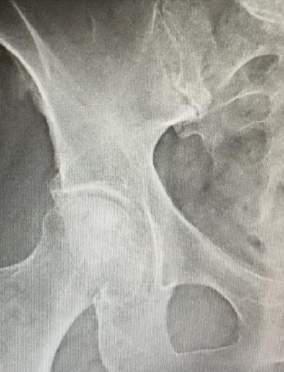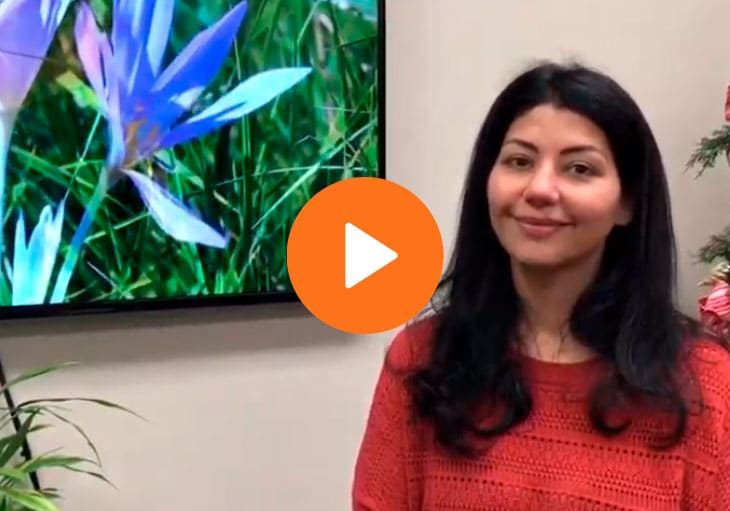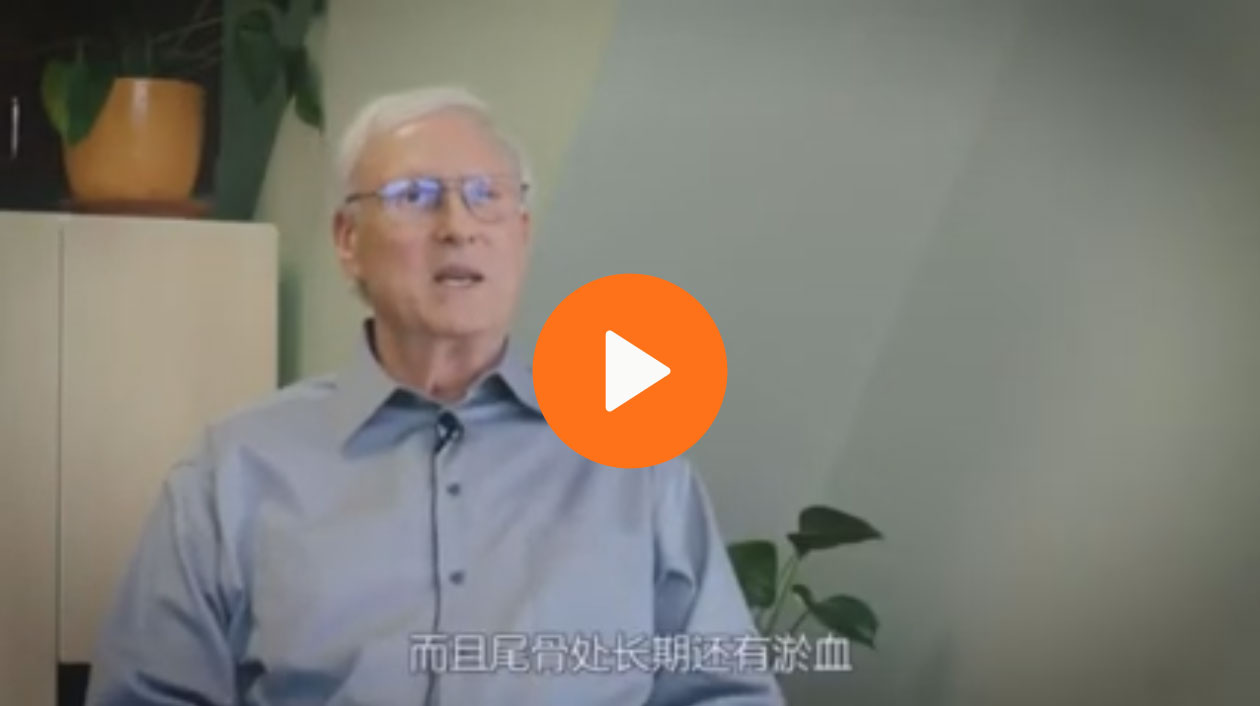Holistic Regenerative
Cell Therapy
Live Your Life Again.
Functional Medicine Therapy is FDA regulated

Dr. Bing You
AABB Certified Cellular Therapy Provider

Dr. Camille George
Expert in stem cell procedures
Holistic Regenerative
Cell Therapy
Live Your Life Again!
Functional Medicine Therapy is FDA regulated


Regenerative Medicine for Pain Management
Currently, the most popular form of stem cell therapy is bone marrow transplant. However, the regenerative properties of stem cells also make them ideal for treating arthritis, chronic pain, and injuries leading to chronic pain and even autoimmunity. So, the scope of stem cell therapy-based treatments is vast.
How can stem cell therapy help you recover and lead a pain-free life?
1. We All Grow from One Cell:
The fertilized egg is our first stem cell. After about five days, it divides and becomes an embryo, which can be stored at a regenerative medicine center or infertility clinic. These embryonic stem cells are used exclusively for in vitro fertilization (IVF) to assist pregnancy, as their use for any other purpose is prohibited under U.S. law.
The stored embryo can later be implanted into a woman’s uterus and develop into a baby. As the embryo grows, it forms the placenta, umbilical cord, and fetus.

1. We All Grow from One Cell:
The fertilized egg is our first stem cell. After about five days, it divides and becomes an embryo, which can be stored at a regenerative medicine center or infertility clinic. These embryonic stem cells are used exclusively for in vitro fertilization (IVF) to assist pregnancy, as their use for any other purpose is prohibited under U.S. law.
The stored embryo can later be implanted into a woman’s uterus and develop into a baby. As the embryo grows, it forms the placenta, umbilical cord, and fetus.

2. Why Should Your Daughter Bank Their Baby’s Umbilical Cord, Cord Blood and Placenta?
What was once discarded as medical waste—the umbilical cord and placenta—is now recognized as a powerful healing resource (Most parents nowadays bank their baby’s cord and placenta.) These birth tissues are rich in
Hematopoietic Stem Cells (which produce blood cells) and Mesenchymal Stem Cells (which can regenerate bone, cartilage, heart tissue, nerves, and more). Medical science has made significant strides in using these cells to treat conditions like blood cancer and regenerate damaged tissues, including muscles, bones, kidneys, and nerves.

3. How Do We Grow from 1 Foot to 6 Feet?

Our growth is powered by stem cells in the bone marrow. There are two types:
- Hematopoietic Stem Cells (HSCs) regenerate red and white blood cells, which have limited lifespans (120 days for red blood cells and 6–12 days for white blood cells).
- Mesenchymal Stem Cells (MSCs) regenerate other body structures, such as skin, hair, liver, blood vessels, muscles, and bones.
Since all cells in the body have a finite lifespan, they are continuously replaced by new cells derived from bone marrow stem cells. This process allows our bones to lengthen until about age 21, helping us reach adult height. After that, our stem cell reserves gradually decline, leading to slower recovery and aging.
4. The Lifespan of Cells and the Decline of the Stem Cell Reserve
While infants are born with an abundance of stem cells, adults have significantly fewer. This explains why a child can heal a sprained ankle in days, while an adult may take weeks or even months to recover. As we age, our bone marrow’s ability to replenish cells diminishes, impacting our overall healing and regeneration.

5. How the Body Heals and Fluctuations in Stem Cell Reserves
When you get a cut, the body releases chemokines and cytokines to attract stem cells to the site of injury, a process called stem cell homing. The speed and effectiveness of healing depend on your stem cell reserve. Chronic conditions like diabetes, hypertension, or autoimmune diseases can deplete these reserves, explaining why some people age more gracefully than others. Maintaining a healthy lifestyle through diet, exercise, and sleep helps preserve your stem cell reserves.
2. Why Should Your Daughter Bank Their Baby’s Umbilical Cord, Cord Blood and Placenta?
What was once discarded as medical waste—the umbilical cord and placenta—is now recognized as a powerful healing resource (Most parents nowadays bank their baby’s cord and placenta.) These birth tissues are rich in
Hematopoietic Stem Cells (which produce blood cells) and Mesenchymal Stem Cells (which can regenerate bone, cartilage, heart tissue, nerves, and more). Medical science has made significant strides in using these cells to treat conditions like blood cancer and regenerate damaged tissues, including muscles, bones, kidneys, and nerves.

3. How Do We Grow from 1 Foot to 6 Feet?

Our growth is powered by stem cells in the bone marrow. There are two types:
- Hematopoietic Stem Cells (HSCs) regenerate red and white blood cells, which have limited lifespans (120 days for red blood cells and 6–12 days for white blood cells).
- Mesenchymal Stem Cells (MSCs) regenerate other body structures, such as skin, hair, liver, blood vessels, muscles, and bones.
Since all cells in the body have a finite lifespan, they are continuously replaced by new cells derived from bone marrow stem cells. This process allows our bones to lengthen until about age 21, helping us reach adult height. After that, our stem cell reserves gradually decline, leading to slower recovery and aging.
4. The Lifespan of Cells and the Decline of the Stem Cell Reserve
While infants are born with an abundance of stem cells, adults have significantly fewer. This explains why a child can heal a sprained ankle in days, while an adult may take weeks or even months to recover. As we age, our bone marrow’s ability to replenish cells diminishes, impacting our overall healing and regeneration.

5. How the Body Heals and Fluctuations in Stem Cell Reserves
When you get a cut, the body releases chemokines and cytokines to attract stem cells to the site of injury, a process called stem cell homing. The speed and effectiveness of healing depend on your stem cell reserve. Chronic conditions like diabetes, hypertension, or autoimmune diseases can deplete these reserves, explaining why some people age more gracefully than others. Maintaining a healthy lifestyle through diet, exercise, and sleep helps preserve your stem cell reserves.
6. The Safety of Regenerative Cell Therapy
Dr. Bing You, General Manager of the Regenerative Medicine Center, is credentialed by the American Association of Blood Banks (AABB) and the American Association of Tissue Banks (AATB), ensuring adherence to the highest safety and quality standards. To guarantee safety, Dr. You personally tests these therapies, using them for facial rejuvenation, anti-aging, improved sleep, and sports injuries before offering them to patients.
6. The Safety of Regenerative Cell Therapy
Dr. Bing You, General Manager of the Regenerative Medicine Center, is credentialed by the American Association of Blood Banks (AABB) and the American Association of Tissue Banks (AATB), ensuring adherence to the highest safety and quality standards. To guarantee safety, Dr. You personally tests these therapies, using them for facial rejuvenation, anti-aging, improved sleep, and sports injuries before offering them to patients.
7. Conditions Best Treated with Regenerative Cell Therapy
Leading experts like Dr. Arnold Caplan, the Father of American Stem Cell, and Dr. Ernst V. Schwarz, a world-famous cardiologist and stem cell research professor at UCLA, have identified key conditions where regenerative cell therapy shows promise, including: Stem cells can be extracted from fat, bone marrow, or birth tissues and delivered via joint injections, intravenous infusion, o r intranasal infusion. The procedure typically takes about 30 minutes, allowing patients to resume daily activities almost immediately. Bone marrow transplants may require up to two hours. Since the first umbilical cord cell therapy in 1988, millions of procedures have been performed with minimal side effects, such as mild injection site pain, low-grade fever, or nausea. Insurance only covers stem cells for cancer treatment. Our regenerative medicine products are sourced from either the patient’s own blood, fat, or bone marrow or from FDA-registered cord blood banks. We strictly adhere to FDA guidelines, ensuring no animal serum or cell expansion is involved. This flyer is i ntended for educational purposes only and does not provide medical advice or diagnoses.
- Orthopedic Issues: Joint degeneration, arthritis, ligament tears, and chronic pain.
- Chronic and Autoimmune Diseases: Diabetes, kidney failure, heart failure, and autoimmune disorders.
- Neurological and Hormonal Conditions: Parkinson’s disease, stroke, multiple sclerosis, hypothyroidism, and low testosterone.
- Anti-Aging and Aesthetics: Improving hair growth, memory, vision, skin elasticity, and facial rejuvenation.
7. Conditions Best Treated with Regenerative Cell Therapy
Leading experts like Dr. Arnold Caplan, the Father of American Stem Cell, and Dr. Ernst V. Schwarz, a world-famous cardiologist and stem cell research professor at UCLA, have identified key conditions where regenerative cell therapy shows promise, including: Stem cells can be extracted from fat, bone marrow, or birth tissues and delivered via joint injections, intravenous infusion, o r intranasal infusion. The procedure typically takes about 30 minutes, allowing patients to resume daily activities almost immediately. Bone marrow transplants may require up to two hours. Since the first umbilical cord cell therapy in 1988, millions of procedures have been performed with minimal side effects, such as mild injection site pain, low-grade fever, or nausea. Insurance only covers stem cells for cancer treatment. Our regenerative medicine products are sourced from either the patient’s own blood, fat, or bone marrow or from FDA-registered cord blood banks. We strictly adhere to FDA guidelines, ensuring no animal serum or cell expansion is involved. This flyer is i ntended for educational purposes only and does not provide medical advice or diagnoses.
- Orthopedic Issues: Joint degeneration, arthritis, ligament tears, and chronic pain.
- Chronic and Autoimmune Diseases: Diabetes, kidney failure, heart failure, and autoimmune disorders.
- Neurological and Hormonal Conditions: Parkinson’s disease, stroke, multiple sclerosis, hypothyroidism, and low testosterone.
- Anti-Aging and Aesthetics: Improving hair growth, memory, vision, skin elasticity, and facial rejuvenation.
8. Results Speak for Themselves
Many patients have experienced life-changing improvements through regenerative cell therapy. Scan the QR codes below to explore their stories and testimonials.
8. Results Speak for Themselves
Many patients have experienced life-changing improvements through regenerative cell therapy. See the testimonials below to discover their stories.
9. The Transplantation Procedures, Recovery Time, and Side Effects
Stem cells can be extracted from fat, bone marrow, or birth tissues and delivered via joint injections, intravenous infusion, o r intranasal infusion. The procedure typically takes about 30 minutes, allowing patients to resume daily activities almost immediately. Bone marrow transplants may require up to two hours. Since the first umbilical cord cell therapy in 1988, millions of procedures have been performed with minimal side effects, such as mild injection site pain, low-grade fever, or nausea.
9. The Transplantation Procedures, Recovery Time, and Side Effects
Stem cells can be extracted from fat, bone marrow, or birth tissues and delivered via joint injections, intravenous infusion, o r intranasal infusion. The procedure typically takes about 30 minutes, allowing patients to resume daily activities almost immediately. Bone marrow transplants may require up to two hours. Since the first umbilical cord cell therapy in 1988, millions of procedures have been performed with minimal side effects, such as mild injection site pain, low-grade fever, or nausea.
10. Insurance Coverage Insurance only covers stem cells for cancer treatment
10. Insurance Coverage Insurance only covers stem cells for cancer treatment
11. Source of Cells and FDA Compliance
Our regenerative medicine products are sourced from either the patient’s own blood, fat, or bone marrow or from FDA-registered cord blood banks. We strictly adhere to FDA guidelines, ensuring no animal serum or cell expansion is involved. This flyer is i ntended for educational purposes only and does not provide medical advice or diagnoses.
11. Source of Cells and FDA Compliance
Our regenerative medicine products are sourced from either the patient’s own blood, fat, or bone marrow or from FDA-registered cord blood banks. We strictly adhere to FDA guidelines, ensuring no animal serum or cell expansion is involved. This flyer is i ntended for educational purposes only and does not provide medical advice or diagnoses.
View/download the entire chapter about stem cell therapy for orthopedic conditions from Dr. Riordan’s book
For more detailed information on stem cells, we welcome you to read/download the entire chapter on stem cell therapy for orthopedic conditions from Dr. Riordan’s new book, Stem Cell Therapy: A Rising Tide – How Stem Cells are Disrupting Medicine and Transforming Lives.
“Neil takes readers on a riveting journey through the past, present, and future of stem cell therapy. His well-researched, educational and entertaining book could change your life. I highly recommend it.” – Tony Robbins, NY Times #1 Bestselling Author
“100 years old will soon become the new 60. Stem cells are a key therapeutic to enable this future. Dr. Riordan’s book is your guide to why this is true and how you will benefit. A must read for anyone who cares about extending their healthy lifespan.” – Peter H. Diamandis, MD; Founder, XPRIZE & Singularity University; Co-Founder, Human Longevity, Inc.; Author of NY Times Best Sellers Abundance and Bold
Based on Research, Conditions Might Be Helped by Stem Cells
Some of Our Patients’ Results
Knee pain and Osteoarthritis
56 years old Patient’s R Knee before and after treatment

Nov 6,2018

May 9,2019
Emanuel Avoided Knee Replacement Surgery

February 11,2019

June 13,2019
Emanuel Avoided Knee Replacement Surgery

December 10, 2018

June 13,2019
Hip Pain
Much More Cartilage Growth

Jan 11, 2019

July 18, 2019
Lower Back Pain
Before and After Treatment for the Lumbar Spine It demonstrates that the neural foramen are bigger and discs are thicker

June 2019

Sep 26,2019
Rotator Cuff Tear

If you or a loved one is looking for a better way to treat your condition, reach out to us today!
*Not reviewed by FDA, these are based on our clinical experiences or journal report from clinical research.










